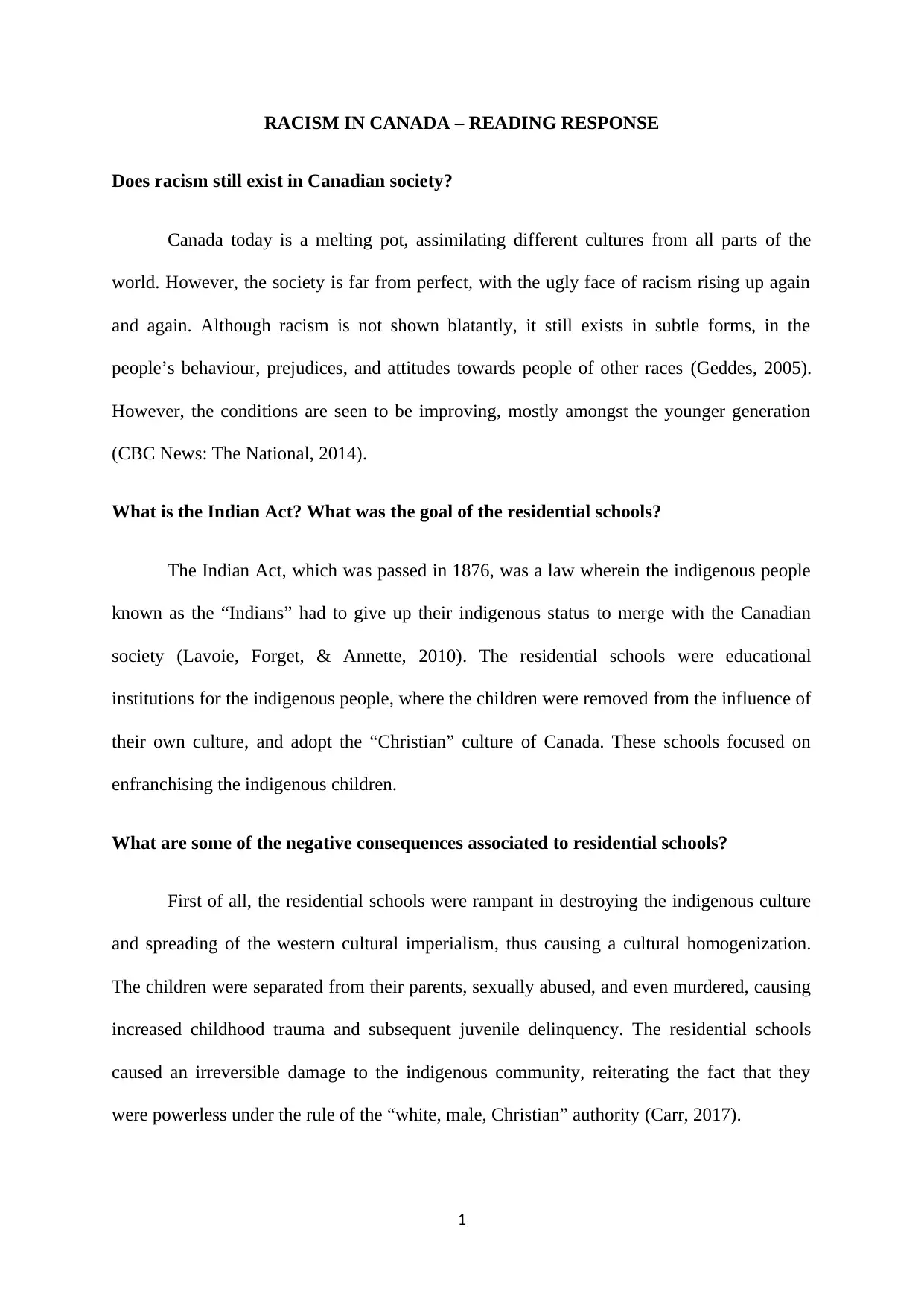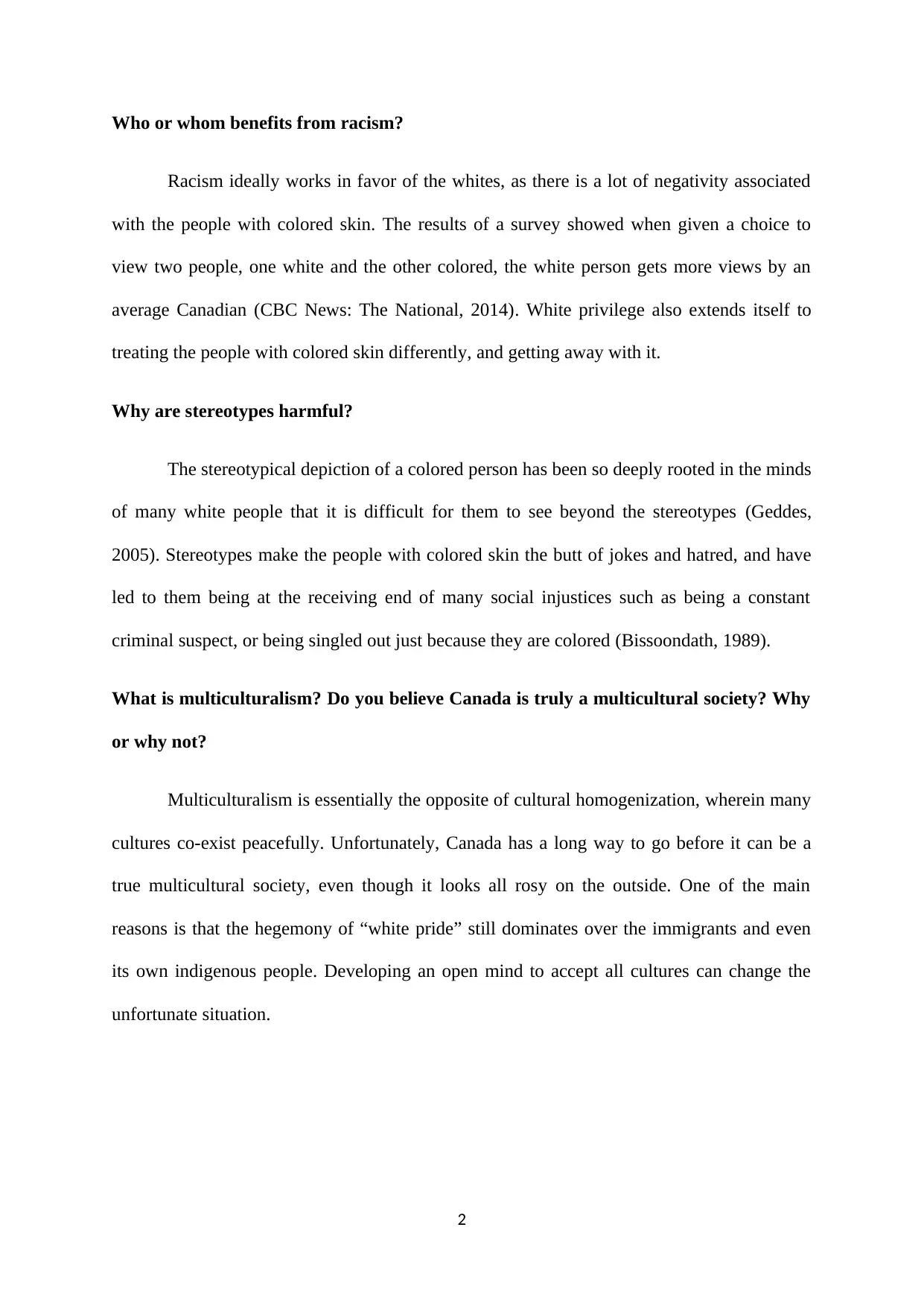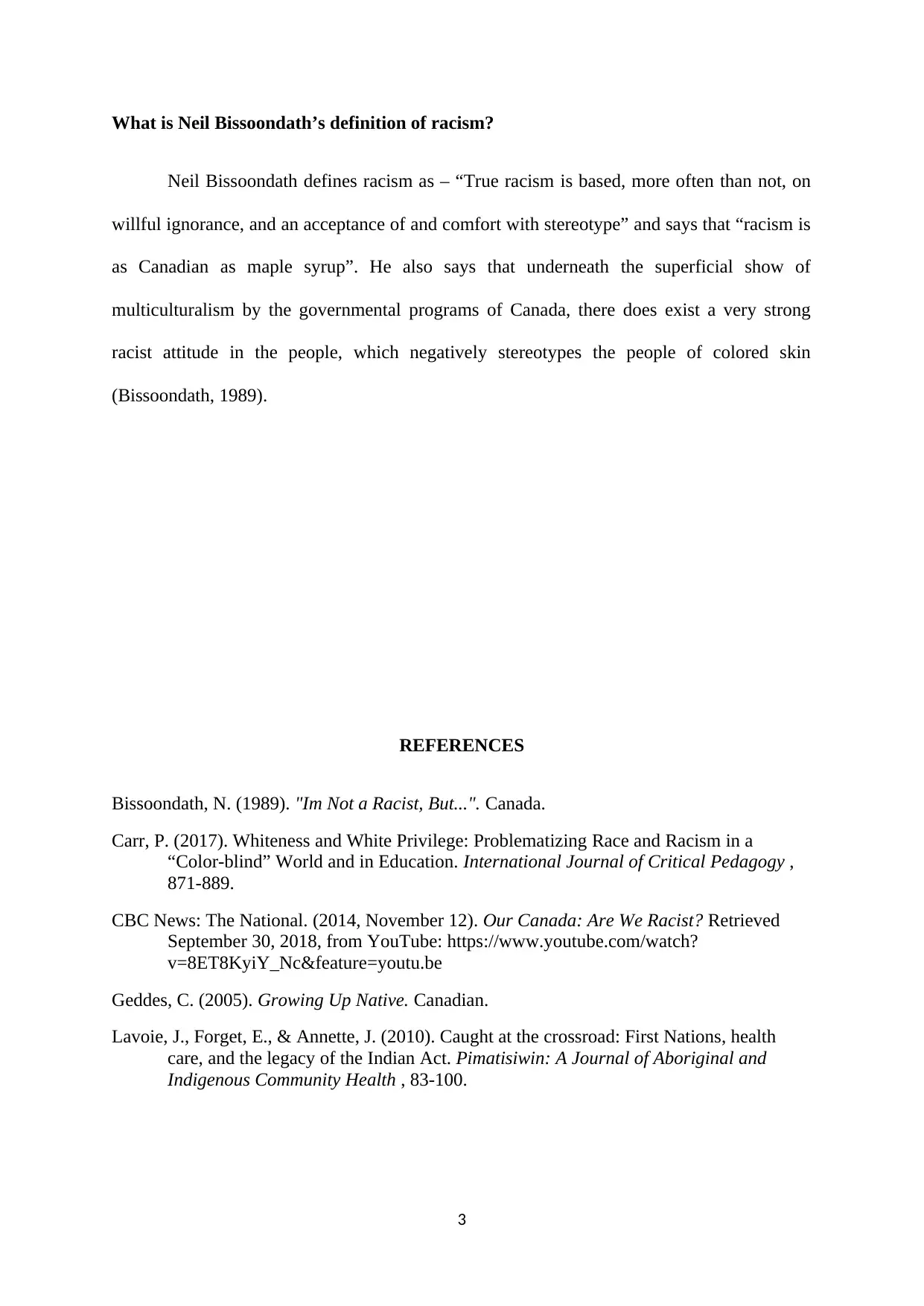Critical Analysis: Racism in Canada, Residential Schools, and More
VerifiedAdded on 2023/06/04
|3
|858
|347
Essay
AI Summary
This essay provides a reading response to the question of whether racism still exists in Canadian society, addressing the subtle forms it takes despite Canada's multicultural image. It delves into the Indian Act of 1876 and the goals of residential schools, highlighting their negative consequences, including cultural destruction, child abuse, and long-term trauma for Indigenous communities. The essay also explores who benefits from racism, the harm caused by stereotypes, and the challenges to achieving true multiculturalism in Canada, referencing Neil Bissoondath's definition of racism as rooted in willful ignorance and acceptance of stereotypes. The analysis concludes that despite governmental efforts, a strong racist attitude persists, negatively stereotyping people of color, indicating that Canada has a considerable distance to travel before it can genuinely claim to be a multicultural society.
1 out of 3










![[object Object]](/_next/static/media/star-bottom.7253800d.svg)